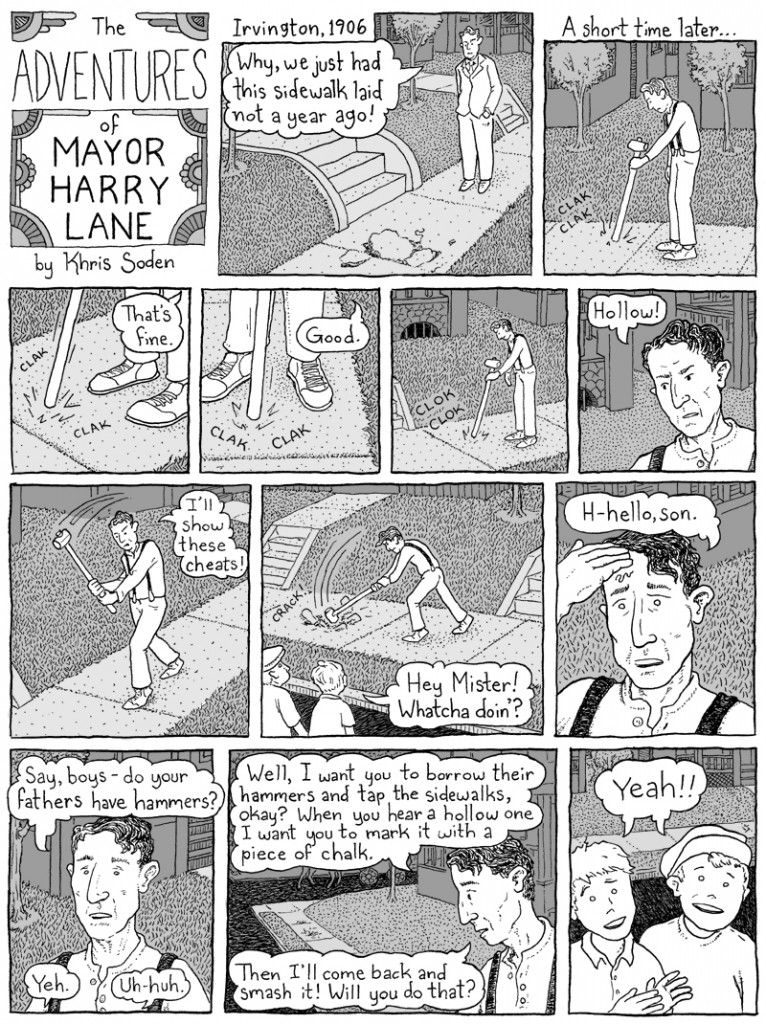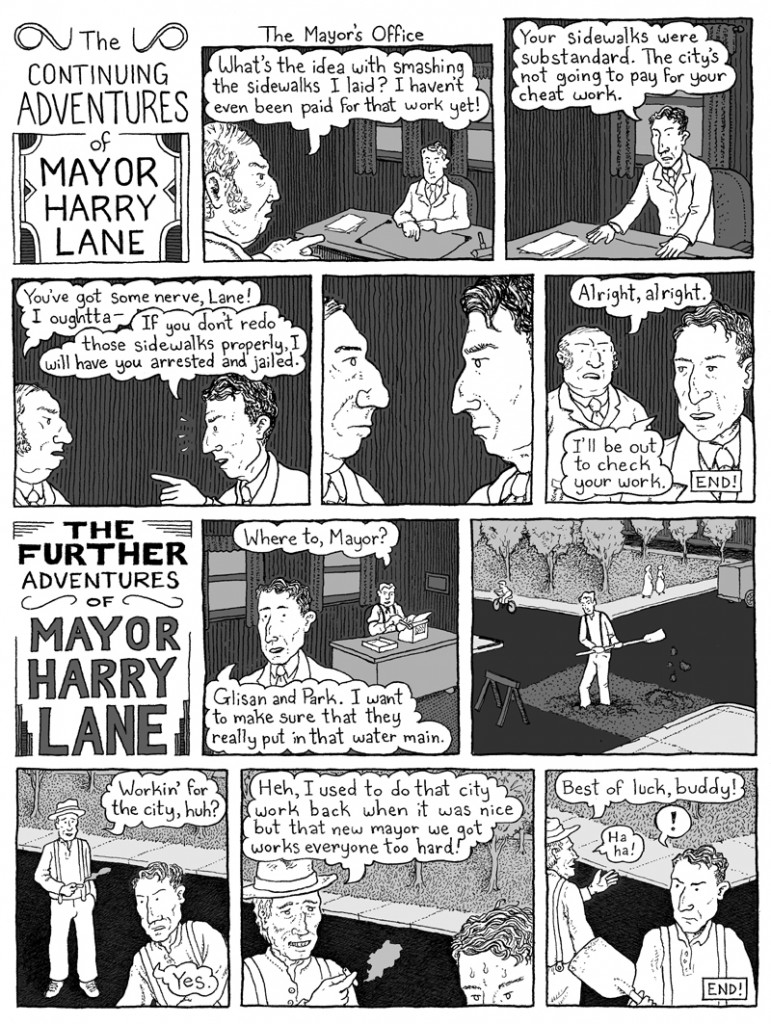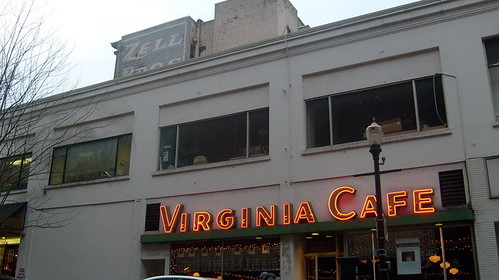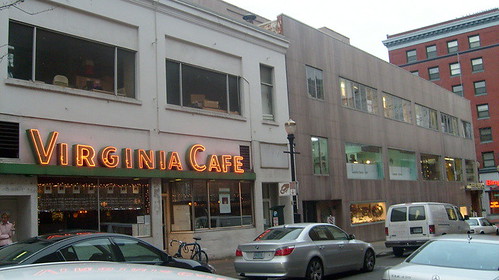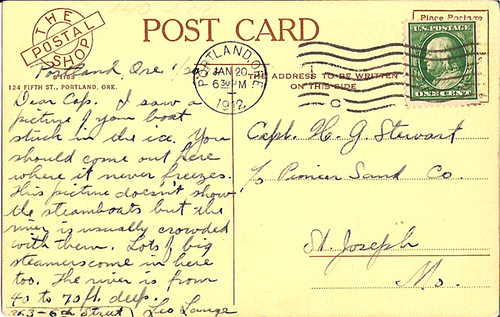Back in October of 1987, Bernie Foster, the publisher of the Skanner, submitted the signatures of 3,000 Portlanders and a thousand dollar check to the city in order to facilitate re-naming a street to Martin Luther King Jr. The city took the signatures and the money, and formed a committee to look into the project. The committee specifically looked at re-naming Front Avenue, Union Avenue and Fifth Avenue. By late December of the same year, the city’s panel determined that re-naming Front would not be feasible, as only nine respondents were for it, while 216 were against it. City Auditor Barbara Clark noted that the primary reason wasn’t racism, but that “Front Avenue really means something”. Another source noted that Front Avenue was one of the city’s oldest street names [which is true: it was a name on the original plat, and survived through the two major street re-namings]. Interestingly, Front was re-named “Naito Parkway” in 1996.
After that, the Committee (it’s official title was the Martin Luther King Boulevard Committee) set its sights on Union Avenue. By November of 1988, they had submitted an application, but had not gotten any sort of sign off by the seven neighborhood associations and two business districts that needed to be involved by the requirement of city policy. In lieu of the sign off, the committee was then requested to produce 3,000 signatures in support of the name change. After that had been gathered, the application would be reviewed by three historians, and the city auditor would conduct a survey of property owners on Union Avenue.
It was estimated that a name change would cost $90 per approximately 100 intersections.
By late March of 1989, the proposal had passed the board of historians (Carl Abbott, E. Kimbark MacColl, and Stanley Parr [as a digression, I own books by two of these guys]) who noted that Union was named in honor of the victorious side of the Civil War. Still, there was little endorsement from the different neighborhood associations. Hosford-Abernethy was the only one to give full endorsement, and one of the other two endorsers – the Central Eastside Industrial Council – only signed on to neutrality. The third endorser was the Metropolitan Service District, who represented the newly-built Convention Center. They thought that the name change would create an impression of a multicultural city. The Portland Planning Commision supported the name change.
By mid-April of 1989, the City Council was having hearings on the subject, and most of City Council was in favor. Mayor Bud Clark noted “the Emancipator of the 1860s was Abraham Lincoln. The Great Emancipator of the 20th Century was Martin Luther King.” Commisioner Bob Koch was the one dissenting voice, noting that he didn’t think that a street in a state of disrepair would be appropriate to be named after Dr. King. In the late 80s, the street was primarily associated with drug dealing, decay, and prostitution [which is pretty much what I think of it when I think about it these days – as a dedicated pedestrian, it is one of the few streets that I feel nervous when walking down, especially past Fremont and before Alberta]. Other factions argued that the symbolic name change would serve as a force to clean up the street. During the surveying for the name change of Union, only 15% of respondents were in favor of the name change. The City Council decided on a vote for it, although the neighborhood associations still hadn’t signed off in favor of it, which was a requirement of city policy. Then-commisioner Earl Blumenauer noted that the idea had been “grandfathered” in because the committee was organized before the policy.
One week later, the council voted unaminously in favor of the change. Commisioner Koch tried to insert a resolution insuring that more funds would be directed to the development of Northeast but this was dismissed under the auspice that it would happen anyway. Bernie Foster, the initiator of the plan, was pleased, while many other people weren’t.
By late May of 1989, there was a coalition calling themselves Citizens to Save Union Avenue that were trying to force a public vote on the issue. They did not garner enough public signatures for a referendum, but they decided to continue with an initiative.
From here, I’d go on with the story – it involves a lot of people unhappy with the name change, and their lack of success in changing it, but I’m kind of tired, and need to be up for work early tomorrow. If you want to know more, the process is easy enough as long as you have a Multnomah County library card. All you need to do is log on to www.multcolib.org and go to their database section. From there, you can find digitized versions of the Oregonian from late 1987 onwards. It’s a great resource. If they had an 1850 to 1987 section, I’d be busting out a lot more comics, but I suppose I’d also have more competition. Anyway, check it out.
Also, in my past posts (especially with the comics), I haven’t cited sources. From here on out, I will be citing sources for any of my historically-attained materials. When I first started doing all of this stuff, I didn’t realize that I was actually doing any sort of academic work. Now that I know, I should be held up to scrutiny. Anyway, uh… have fun!
Sources:
Lane, Dee. “King Committee Turns to Union Avenue” The Oregonian, 24 December 1987, B01
Mayer, James. “Dream Fall’s For Street’s name Change” The Oregonian, 14 January 1989, D01
Mayer, James. “Union Avenue Isn’t Burning For Name Change” The Oregonian, 24 March 1989, E02
Mayer, James. “Switch From ‘Union’ To ‘King’ Endorsed” The Oregonian, 29 March 1989, C03
Mayer, James. “City Council Supports Union To King Change” The Oregonian, 14 April 1989, A01
Mayer, Jmes. “City Council Votes To Rename Union” The Oregonian, 21 April 1989, D01
Mayer, James. “Proponents of Union Avenue Fall Short” The Oregonian, 23 May 1989, C05
